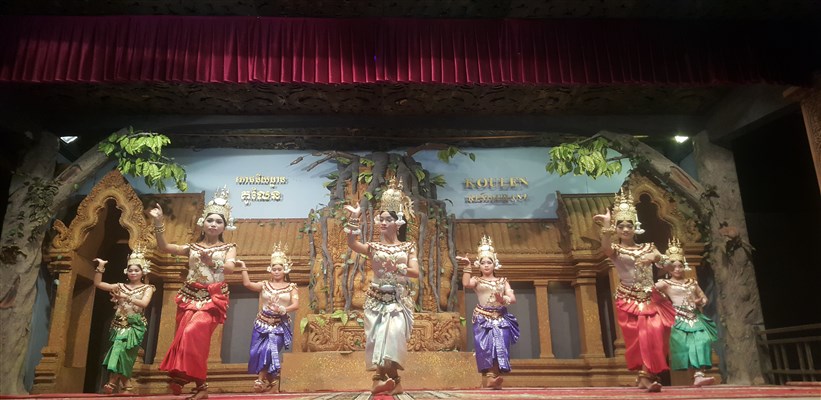- Call us Via Whatsapp: + 84 832 126 699
(10,000 reviews)
- Monday - Sunday : 08:00 - 17:00
(10,000 reviews)
Culture embraces a number of things; it affects the behaviour of groups of people, not necessarily a nation, and sometimes across national boundaries that did not exist through the ages. In the case of Cambodia, it is part of a wider geographical region, sometimes known as Indochina, South East Asia, where there has been considerable migration over the generations. When it comes to Cambodia’s culture it manifests itself in many ways. While religion has been a major influence throughout the region, culture involves everything from language and festivals to marriage and cuisine, not to mention music and dance within a broader title of art.

Dance is a very important part of any festival. There are several ethnic groups within Cambodia and each has its own dances; anyone enjoying a Cambodia travel package and lucky enough to be in Cambodia during one of the many annual festivals will be able to see the colourful performances for themselves. The local culture is one of the main reasons for taking a Cambodia holiday and if you are travelling elsewhere in the region you may see similarities, as well as differences, in the dances.
There has been minimal external influence on Cambodian music. The origins are Khmer who spread beyond the current national boundaries. Whenever music is played the occasion is marked by colour and several traditional instruments that have been played for centuries; Pey, Sadieu flock, Kham flock and Tror Le among them. There may be as many as a hundred traditional dances with the most popular the Bangle Dance, Elephant Dance, Saravan Dance and Romkher Bach Dance. Some are thought to originate as far back as the early centuries AD.
Classical traditional dances began in the royal court centuries ago with estimates of 3,000 dancers in the 12th Century court of Jayavarman VII. The performers were almost all colourfully dressed ladies with impressive head-dresses moving slowly to the music. The origins of this form of dancing are thought to be in India and within Hinduism but they are now very much Cambodian.
In Khmer, the females were known as Apsara Dancers and this form of ‘’art’’ was known as Robam Apsara. Each of the dances tells a story. One of the most famous is not so old; in the 18th Century, the poem, Ramayana, was the basis for a dance in the Royal Court and it is also performed by puppets in village all across Cambodia.
Just over half a century ago, this form of dancing found its way into modern music and one of the top exponents of what was known as the Royal Ballet was the daughter of King Norodom Sihanouk, Princess Norodom Bopha Devi who is very much an expert in Apsara dancing.
The age of Apsara dancing is confirmed by the many carvings depicting it in the Angkor temple complex.
No Cambodia travel is complete unless you attend a performance of Apsara dancing, an integral part of Cambodian culture.
Leave a Reply
Your email address will not be published. Required fields are marked *